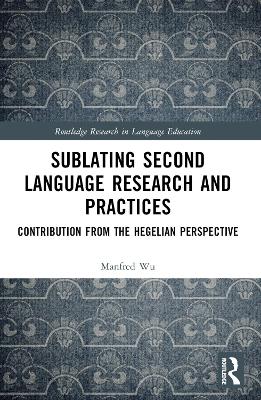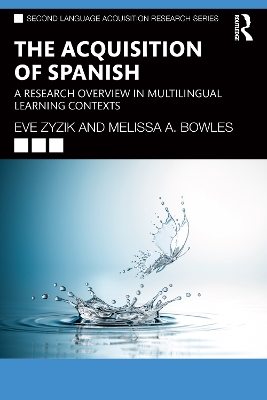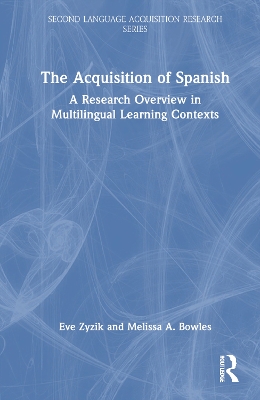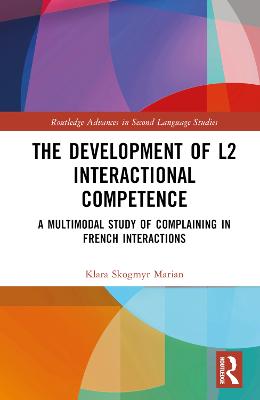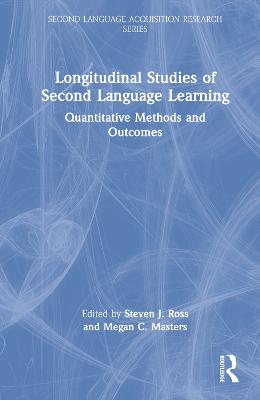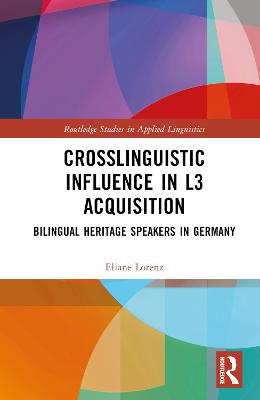Routledge Handbook of Technological Advances in Researching Language Learning
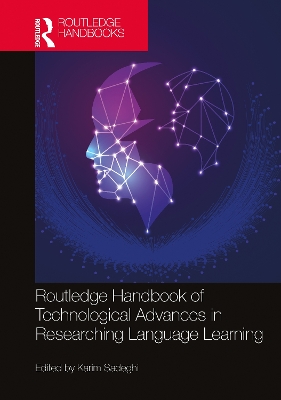 portes grátis
portes grátis
Routledge Handbook of Technological Advances in Researching Language Learning
Sadeghi, Karim
Taylor & Francis Ltd
11/2024
512
Dura
9781032604312
Pré-lançamento - envio 15 a 20 dias após a sua edição
Descrição não disponível.
List of Contributors
Foreword: Dorothy M. Chun
Acknowledgements
Chapter 1. Technology in Researching Language Learning: An Overview
Section 1: Technology and Data Collection in Applied Linguistics Research: Options and Considerations
Chapter 2. Online data collection in applied linguistics
Chapter 3. Collecting 'real' data in Virtual Reality (VR) settings: Best practices
Chapter 4. The use of screencasting in corrective feedback research: Advantages and limitations
Chapter 5. The role, nature, and challenges of the use of online testing methodology in measuring language instruction (structured input and textual enhancement)
Chapter 6. The role of digital technology in second language listening assessment and pedagogy research
Chapter 7. Automated grammatical error correction in researching written learner language
Chapter 8. Digital language portraits in multilingualism research
Chapter 9. Researching technology-enhanced oral feedback in L2 learning: A methodological review
Chapter 10. Technological innovations in researching language assessment: A scoping review
Chapter 11. Ethical concerns and considerations for videoconferencing interviews in Applied Linguistics research
Section 2: Technology and L2 Learning Research: Empirical Studies
Chapter 12. Using game-mediated digital tasks to elicit data on incidental vocabulary learning
Chapter 13. Designing computer-assisted language learning tools as platforms for data collection in applied linguistics
Chapter 14. YellowDig discussion board as a tool for researching L2 learning
Chapter 15. Stimulated recall interviews using digital technology in L2 research
Chapter 16. Exploring the role of technology in capturing complex learning environments
Section 3: Technology and Second Language Processing/Psycholinguistics Research
Chapter 17. Electroencephalography with iMotions in language learning research: Opening the 'Black Box'
Chapter 18. Conducting web-based experiments in L2 psycholinguistic research
Chapter 19. Eye-tracking in reading research: What it is, what it is not, and what it may become
Chapter 20. Eye-tracking and self-paced reading: Evaluation of experimental technologies in investigating the processing of relative clause sentence structures by Japanese L2 learners of English
Chapter 21. Using millisecond timing of typewritten production to understand lexical processing in non-Latin scripts: Evidence from Persian
Chapter 22. Keylogging and screencasting to help investigate L2 writing processes
Section 4: Technology and Language Teacher Education Research
Chapter 23. The affordances of video conferencing for evidence-based reflective practice and multimodal corpus research in teacher education practicum contexts
Chapter 24. Enhancing research in teacher wellbeing through digital technology
Chapter 25. Technology-supported interviews in Applied Linguistics research: Dialogic data collection
Chapter 26. Unveiling the digital canvas: Technology's role in language teacher education research
Chapter 27. Redefining digital technologies in teacher education and professional development research: An integrated evaluation approach
Section 5: Technology and L2 Pragmatics Research
Chapter 28. Technology-enhanced data collection methods in L2 pragmatics research
Chapter 29. Spoken Dialogue Systems and ChatGPT for second language pragmatics research
Chapter 30. Researching L2 interactional repertoires in Zoom-mediated environments
Chapter 31. Using high-immersion social virtual reality environments for researching interculturality
Section 6: Technology and Conducting Literature Reviews and Meta-Analyses
Chapter 32. Systematic reviews in applied linguistics: Tools and frameworks
Chapter 33. Study screening for meta-research: An overview of AI tools
Chapter 34. A corpus approach to systematic literature reviews
Section 7: Technology and Analysing L2 Data
Chapter 35. Machine Learning (ML) tools for measuring second language (L2) intelligibility
Chapter 36. Affordances of screencast technology for analyzing engagement with computer-mediated feedback on L2 writing
Chapter 37. Corpus linguistics in second language vocabulary research
Chapter 38. Conclusion: Where next?
Index
Foreword: Dorothy M. Chun
Acknowledgements
Chapter 1. Technology in Researching Language Learning: An Overview
Section 1: Technology and Data Collection in Applied Linguistics Research: Options and Considerations
Chapter 2. Online data collection in applied linguistics
Chapter 3. Collecting 'real' data in Virtual Reality (VR) settings: Best practices
Chapter 4. The use of screencasting in corrective feedback research: Advantages and limitations
Chapter 5. The role, nature, and challenges of the use of online testing methodology in measuring language instruction (structured input and textual enhancement)
Chapter 6. The role of digital technology in second language listening assessment and pedagogy research
Chapter 7. Automated grammatical error correction in researching written learner language
Chapter 8. Digital language portraits in multilingualism research
Chapter 9. Researching technology-enhanced oral feedback in L2 learning: A methodological review
Chapter 10. Technological innovations in researching language assessment: A scoping review
Chapter 11. Ethical concerns and considerations for videoconferencing interviews in Applied Linguistics research
Section 2: Technology and L2 Learning Research: Empirical Studies
Chapter 12. Using game-mediated digital tasks to elicit data on incidental vocabulary learning
Chapter 13. Designing computer-assisted language learning tools as platforms for data collection in applied linguistics
Chapter 14. YellowDig discussion board as a tool for researching L2 learning
Chapter 15. Stimulated recall interviews using digital technology in L2 research
Chapter 16. Exploring the role of technology in capturing complex learning environments
Section 3: Technology and Second Language Processing/Psycholinguistics Research
Chapter 17. Electroencephalography with iMotions in language learning research: Opening the 'Black Box'
Chapter 18. Conducting web-based experiments in L2 psycholinguistic research
Chapter 19. Eye-tracking in reading research: What it is, what it is not, and what it may become
Chapter 20. Eye-tracking and self-paced reading: Evaluation of experimental technologies in investigating the processing of relative clause sentence structures by Japanese L2 learners of English
Chapter 21. Using millisecond timing of typewritten production to understand lexical processing in non-Latin scripts: Evidence from Persian
Chapter 22. Keylogging and screencasting to help investigate L2 writing processes
Section 4: Technology and Language Teacher Education Research
Chapter 23. The affordances of video conferencing for evidence-based reflective practice and multimodal corpus research in teacher education practicum contexts
Chapter 24. Enhancing research in teacher wellbeing through digital technology
Chapter 25. Technology-supported interviews in Applied Linguistics research: Dialogic data collection
Chapter 26. Unveiling the digital canvas: Technology's role in language teacher education research
Chapter 27. Redefining digital technologies in teacher education and professional development research: An integrated evaluation approach
Section 5: Technology and L2 Pragmatics Research
Chapter 28. Technology-enhanced data collection methods in L2 pragmatics research
Chapter 29. Spoken Dialogue Systems and ChatGPT for second language pragmatics research
Chapter 30. Researching L2 interactional repertoires in Zoom-mediated environments
Chapter 31. Using high-immersion social virtual reality environments for researching interculturality
Section 6: Technology and Conducting Literature Reviews and Meta-Analyses
Chapter 32. Systematic reviews in applied linguistics: Tools and frameworks
Chapter 33. Study screening for meta-research: An overview of AI tools
Chapter 34. A corpus approach to systematic literature reviews
Section 7: Technology and Analysing L2 Data
Chapter 35. Machine Learning (ML) tools for measuring second language (L2) intelligibility
Chapter 36. Affordances of screencast technology for analyzing engagement with computer-mediated feedback on L2 writing
Chapter 37. Corpus linguistics in second language vocabulary research
Chapter 38. Conclusion: Where next?
Index
Este título pertence ao(s) assunto(s) indicados(s). Para ver outros títulos clique no assunto desejado.
applied linguistics research;language learning;research methods;language processing;data collection;data analysis;meta-analysis;pragmatics;teacher education
List of Contributors
Foreword: Dorothy M. Chun
Acknowledgements
Chapter 1. Technology in Researching Language Learning: An Overview
Section 1: Technology and Data Collection in Applied Linguistics Research: Options and Considerations
Chapter 2. Online data collection in applied linguistics
Chapter 3. Collecting 'real' data in Virtual Reality (VR) settings: Best practices
Chapter 4. The use of screencasting in corrective feedback research: Advantages and limitations
Chapter 5. The role, nature, and challenges of the use of online testing methodology in measuring language instruction (structured input and textual enhancement)
Chapter 6. The role of digital technology in second language listening assessment and pedagogy research
Chapter 7. Automated grammatical error correction in researching written learner language
Chapter 8. Digital language portraits in multilingualism research
Chapter 9. Researching technology-enhanced oral feedback in L2 learning: A methodological review
Chapter 10. Technological innovations in researching language assessment: A scoping review
Chapter 11. Ethical concerns and considerations for videoconferencing interviews in Applied Linguistics research
Section 2: Technology and L2 Learning Research: Empirical Studies
Chapter 12. Using game-mediated digital tasks to elicit data on incidental vocabulary learning
Chapter 13. Designing computer-assisted language learning tools as platforms for data collection in applied linguistics
Chapter 14. YellowDig discussion board as a tool for researching L2 learning
Chapter 15. Stimulated recall interviews using digital technology in L2 research
Chapter 16. Exploring the role of technology in capturing complex learning environments
Section 3: Technology and Second Language Processing/Psycholinguistics Research
Chapter 17. Electroencephalography with iMotions in language learning research: Opening the 'Black Box'
Chapter 18. Conducting web-based experiments in L2 psycholinguistic research
Chapter 19. Eye-tracking in reading research: What it is, what it is not, and what it may become
Chapter 20. Eye-tracking and self-paced reading: Evaluation of experimental technologies in investigating the processing of relative clause sentence structures by Japanese L2 learners of English
Chapter 21. Using millisecond timing of typewritten production to understand lexical processing in non-Latin scripts: Evidence from Persian
Chapter 22. Keylogging and screencasting to help investigate L2 writing processes
Section 4: Technology and Language Teacher Education Research
Chapter 23. The affordances of video conferencing for evidence-based reflective practice and multimodal corpus research in teacher education practicum contexts
Chapter 24. Enhancing research in teacher wellbeing through digital technology
Chapter 25. Technology-supported interviews in Applied Linguistics research: Dialogic data collection
Chapter 26. Unveiling the digital canvas: Technology's role in language teacher education research
Chapter 27. Redefining digital technologies in teacher education and professional development research: An integrated evaluation approach
Section 5: Technology and L2 Pragmatics Research
Chapter 28. Technology-enhanced data collection methods in L2 pragmatics research
Chapter 29. Spoken Dialogue Systems and ChatGPT for second language pragmatics research
Chapter 30. Researching L2 interactional repertoires in Zoom-mediated environments
Chapter 31. Using high-immersion social virtual reality environments for researching interculturality
Section 6: Technology and Conducting Literature Reviews and Meta-Analyses
Chapter 32. Systematic reviews in applied linguistics: Tools and frameworks
Chapter 33. Study screening for meta-research: An overview of AI tools
Chapter 34. A corpus approach to systematic literature reviews
Section 7: Technology and Analysing L2 Data
Chapter 35. Machine Learning (ML) tools for measuring second language (L2) intelligibility
Chapter 36. Affordances of screencast technology for analyzing engagement with computer-mediated feedback on L2 writing
Chapter 37. Corpus linguistics in second language vocabulary research
Chapter 38. Conclusion: Where next?
Index
Foreword: Dorothy M. Chun
Acknowledgements
Chapter 1. Technology in Researching Language Learning: An Overview
Section 1: Technology and Data Collection in Applied Linguistics Research: Options and Considerations
Chapter 2. Online data collection in applied linguistics
Chapter 3. Collecting 'real' data in Virtual Reality (VR) settings: Best practices
Chapter 4. The use of screencasting in corrective feedback research: Advantages and limitations
Chapter 5. The role, nature, and challenges of the use of online testing methodology in measuring language instruction (structured input and textual enhancement)
Chapter 6. The role of digital technology in second language listening assessment and pedagogy research
Chapter 7. Automated grammatical error correction in researching written learner language
Chapter 8. Digital language portraits in multilingualism research
Chapter 9. Researching technology-enhanced oral feedback in L2 learning: A methodological review
Chapter 10. Technological innovations in researching language assessment: A scoping review
Chapter 11. Ethical concerns and considerations for videoconferencing interviews in Applied Linguistics research
Section 2: Technology and L2 Learning Research: Empirical Studies
Chapter 12. Using game-mediated digital tasks to elicit data on incidental vocabulary learning
Chapter 13. Designing computer-assisted language learning tools as platforms for data collection in applied linguistics
Chapter 14. YellowDig discussion board as a tool for researching L2 learning
Chapter 15. Stimulated recall interviews using digital technology in L2 research
Chapter 16. Exploring the role of technology in capturing complex learning environments
Section 3: Technology and Second Language Processing/Psycholinguistics Research
Chapter 17. Electroencephalography with iMotions in language learning research: Opening the 'Black Box'
Chapter 18. Conducting web-based experiments in L2 psycholinguistic research
Chapter 19. Eye-tracking in reading research: What it is, what it is not, and what it may become
Chapter 20. Eye-tracking and self-paced reading: Evaluation of experimental technologies in investigating the processing of relative clause sentence structures by Japanese L2 learners of English
Chapter 21. Using millisecond timing of typewritten production to understand lexical processing in non-Latin scripts: Evidence from Persian
Chapter 22. Keylogging and screencasting to help investigate L2 writing processes
Section 4: Technology and Language Teacher Education Research
Chapter 23. The affordances of video conferencing for evidence-based reflective practice and multimodal corpus research in teacher education practicum contexts
Chapter 24. Enhancing research in teacher wellbeing through digital technology
Chapter 25. Technology-supported interviews in Applied Linguistics research: Dialogic data collection
Chapter 26. Unveiling the digital canvas: Technology's role in language teacher education research
Chapter 27. Redefining digital technologies in teacher education and professional development research: An integrated evaluation approach
Section 5: Technology and L2 Pragmatics Research
Chapter 28. Technology-enhanced data collection methods in L2 pragmatics research
Chapter 29. Spoken Dialogue Systems and ChatGPT for second language pragmatics research
Chapter 30. Researching L2 interactional repertoires in Zoom-mediated environments
Chapter 31. Using high-immersion social virtual reality environments for researching interculturality
Section 6: Technology and Conducting Literature Reviews and Meta-Analyses
Chapter 32. Systematic reviews in applied linguistics: Tools and frameworks
Chapter 33. Study screening for meta-research: An overview of AI tools
Chapter 34. A corpus approach to systematic literature reviews
Section 7: Technology and Analysing L2 Data
Chapter 35. Machine Learning (ML) tools for measuring second language (L2) intelligibility
Chapter 36. Affordances of screencast technology for analyzing engagement with computer-mediated feedback on L2 writing
Chapter 37. Corpus linguistics in second language vocabulary research
Chapter 38. Conclusion: Where next?
Index
Este título pertence ao(s) assunto(s) indicados(s). Para ver outros títulos clique no assunto desejado.

